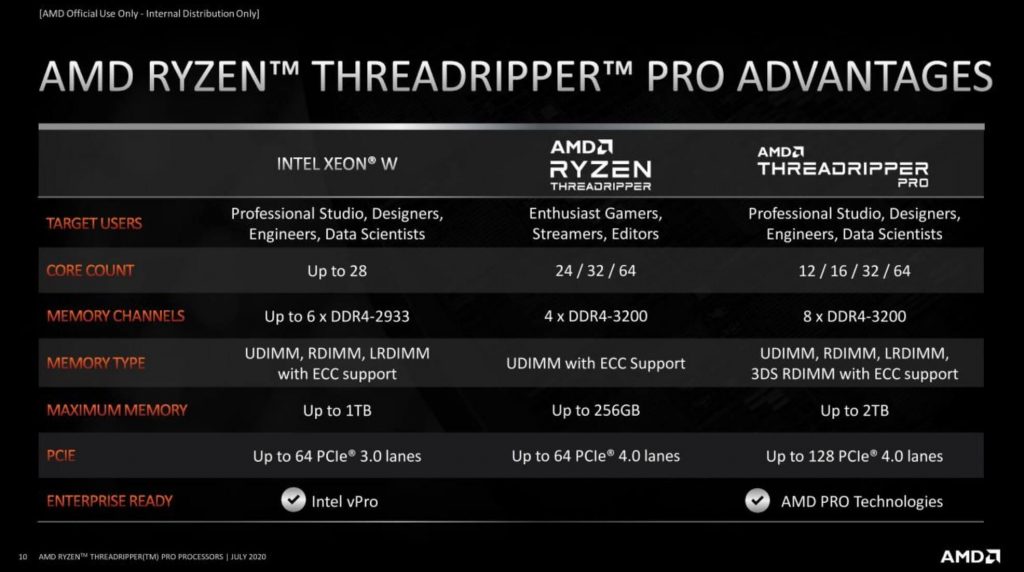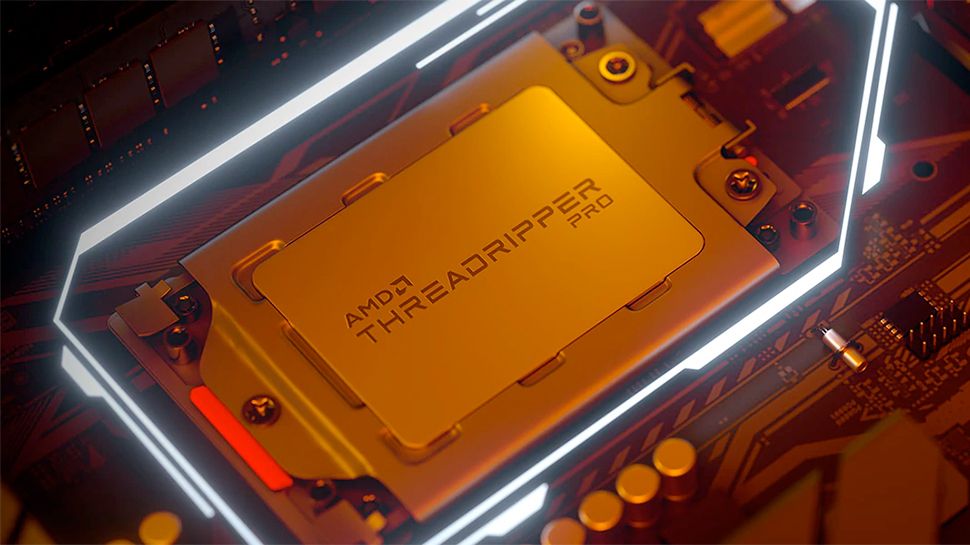Everyone wants to go faster without breaking the bank. The suite of products from AMD’s Infinity Fabric continues to grow, and some may have noted the arrival of the Threadripper Pro 3000 series at the beginning of 2021. Is it really worth going Pro? Yes. Here are the reasons why:
- The new Threadripper Pro series extends the AMD lead for High-end Desktops (HEDT) and multithreaded workloads by increasing memory bandwidth, capacity, and PCIe 4.0 lane count.
- Workloads that benefit from more than 256GB of RAM, maximum RAM bandwidth, and/or the reliability of ECC memory will strongly benefit from the TR Pro. Otherwise, the existing Threadripper 3000s are a better value for many existing scientific and media workloads.
- Single-thread workloads continue to see the best results from Ryzen 5000 and Intel 11th-Gen Core CPUs, while those seeking maximum compute density in a rack should steer towards the server-class CPUs such as the EPYC 7003 series.

Threadripper Pro seems interestingly timed: it is an extension of the Zen2 family, yet the faster Zen3 products have just begun shipping in the form of the Ryzen 5000 and EPYC 7003 series of CPUs. TRPro also sits somewhere in between the capabilities of the existing Threadripper 3000 and the server-class EPYCs, which further classifies the CPU series as a ‘niche’ product.
Is this simply AMD ‘flooding the zone‘, or is there a realistic market the TRPro can carve out? Let’s look at the numbers and facts.
The four new Threadripper Pro CPUs span a wider range of core counts than the original TR3000, and offer potentially important enhancements:
- Models with 12, 16, 32 and 64 cores
- 8x Memory Capacity: 2TB
- 2x Memory Bandwidth: 204GB/sec
- HW-level Memory Encryption: AMD Memory Guard
- 50% more PCIe 4.0 Lanes: 128
- Pro Manageability for Deployment/Support
However, they bring a few qualities that may give a buyer pause:
- No overclocking
- Lower Base Clock / Lower Turbo Clock
- 50% increase in the price of the CPU, and generally the system as a whole.
The question, therefore: does increased memory bandwidth and ‘Pro’ features overcome the limitations imposed by the Pro architecture, and drive greater productivity?
For the right workloads: Yes.
As various tests have shown [tbd reference], memory-bound scientific workloads such as High-Performance Conjugate Gradient can run up to twice as fast on the Threadripper Pro series, while media applications that depend on multithreaded render operations and simulations can see 20-30% improvements for appropriate operations [reference from AMD site].
Is your workload a candidate for the Threadripper Pro?
A utility such as Intel’s vTune can help to reveal bottlenecks due to memory bandwidth or sizing, as can simple observations about memory usage for CPU utilization from an OS level.
In addition, some workloads can be highly intolerant of computation errors or system instability that result from occasional bit-errors within the standard unbuffered DIMM memory infrastructure, leading to a system crash or errant bit. In this case, the added TR Pro support for ECC-capable Registered memory can eliminate infrequent but impactful data processing events.
What about workloads that are not memory bound?
In this case, the original Threadripper feature set is a strong choice. Both TR and TRPro lines offer 32 and 64 Core models in a single socket, providing ample processing power in a cost-optimization package, and both chips pack identical – and large – L1, L2 and L3 caches. However, the non-Pro provides greater options for speed enhancements of both memory and CPU clocks, as well as one-click Auto-Overclocking via the Ryzen Master utility. For the ‘brute-force’ speed approach above 16 cores (where the Ryzen 5000 dominates), the original Threadrippers and the ever-popular 3970X get the node.
But wait: What about the frequency optimized EPYC 7003 CPUs?
The new Milan-series, such as the 32C 75F3, are notable CPUs offering enterprise-class Zen3 performance and similar memory bandwidth, capacity, and ECC-support as the Threadripper Pros, plus larger l3 caches. However, the current options for clock speeds, single-core boost, and a general focus on server-centric deployments make the F-optimized series more suited as virtualized desktops or specialized L3-centric compute workloads, than as an extreme-performance CPU under your desk.
Conclusion
Threadripper Pros are highly specialized processors within the niche of highly specialized processors. The line succeeds in blending the best of Ryzen single-core performance with the high thread-count focus of EPYC and does so within a single, nearly unconstrained, and consolidated package. For Intel to compete with this CPU requires dual-Xeons from their server line, which is a great cost. Even for AMD to compete with itself requires next-generation silicon from the Zen3 family, which is not yet targeted at the HEDT crowd. Therefore, for those running multithreaded workloads dependent on memory throughput and capacity beyond 256G, there really isn’t a fiscally practical alternative, making the Threadripper Pro the go-to choice for a select set of users.


